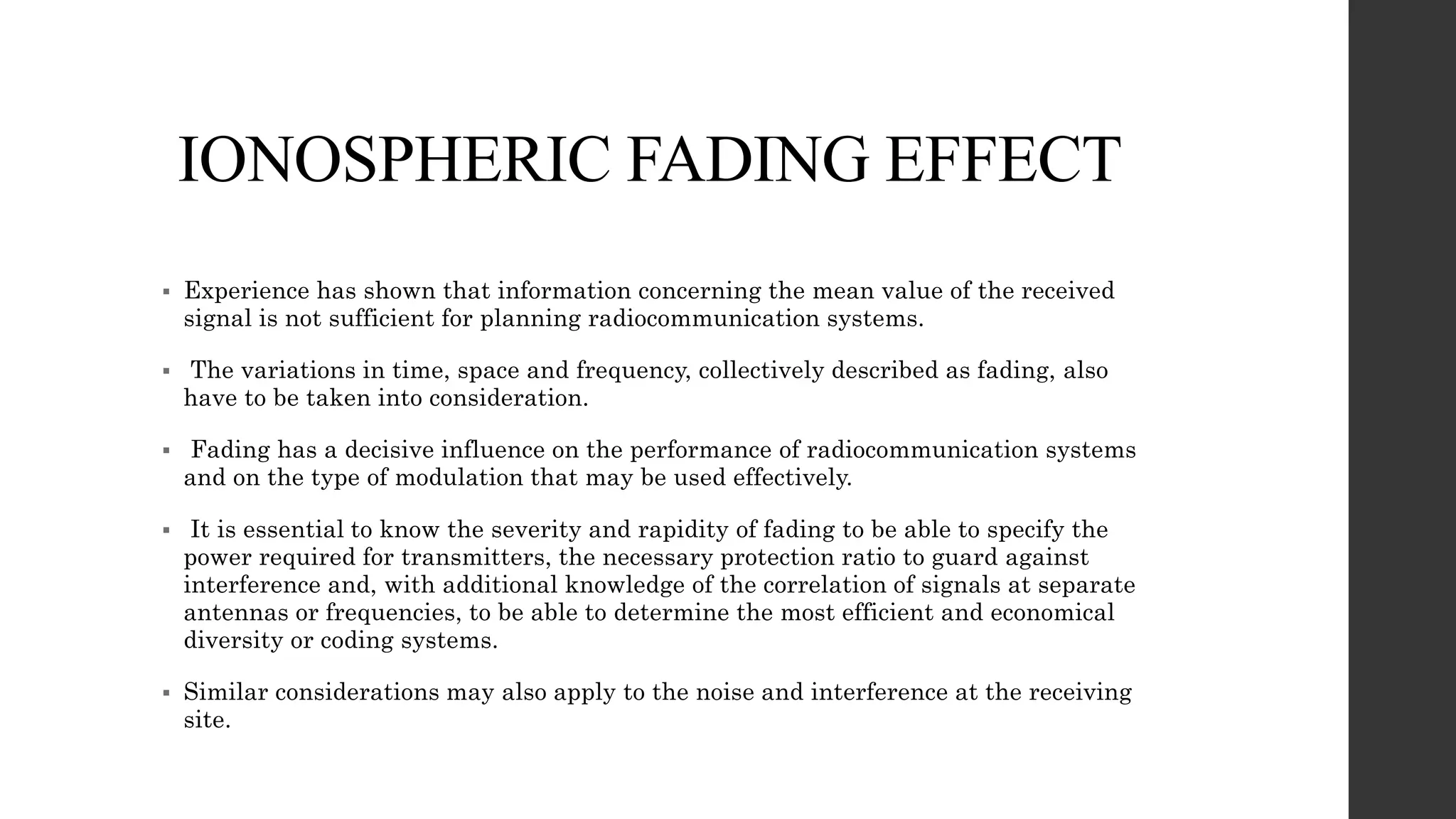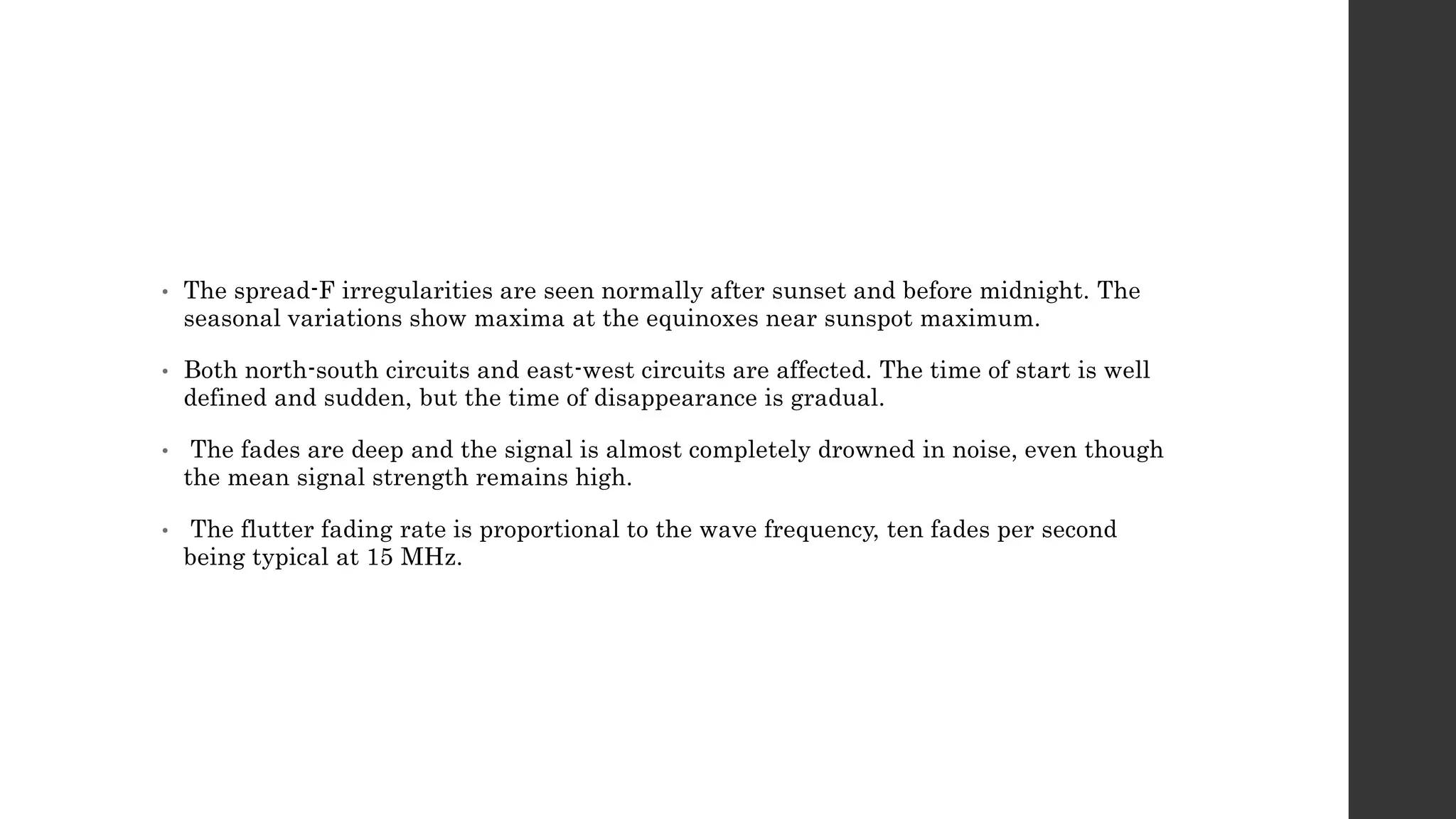The document details the ionospheric fading effect, emphasizing its significance in radiocommunication system performance and the need to consider various types of fading, such as amplitude, interference, polarization, and selective fading. It outlines causes of fading, including the ionosphere's movement and changes in polarization, as well as regional anomalies like surge fading and flutter fading observed in the tropics. Recommendations for fading allowances for broadcasting services in the tropical zone are also discussed, highlighting statistical measures for planning effective communication systems.












